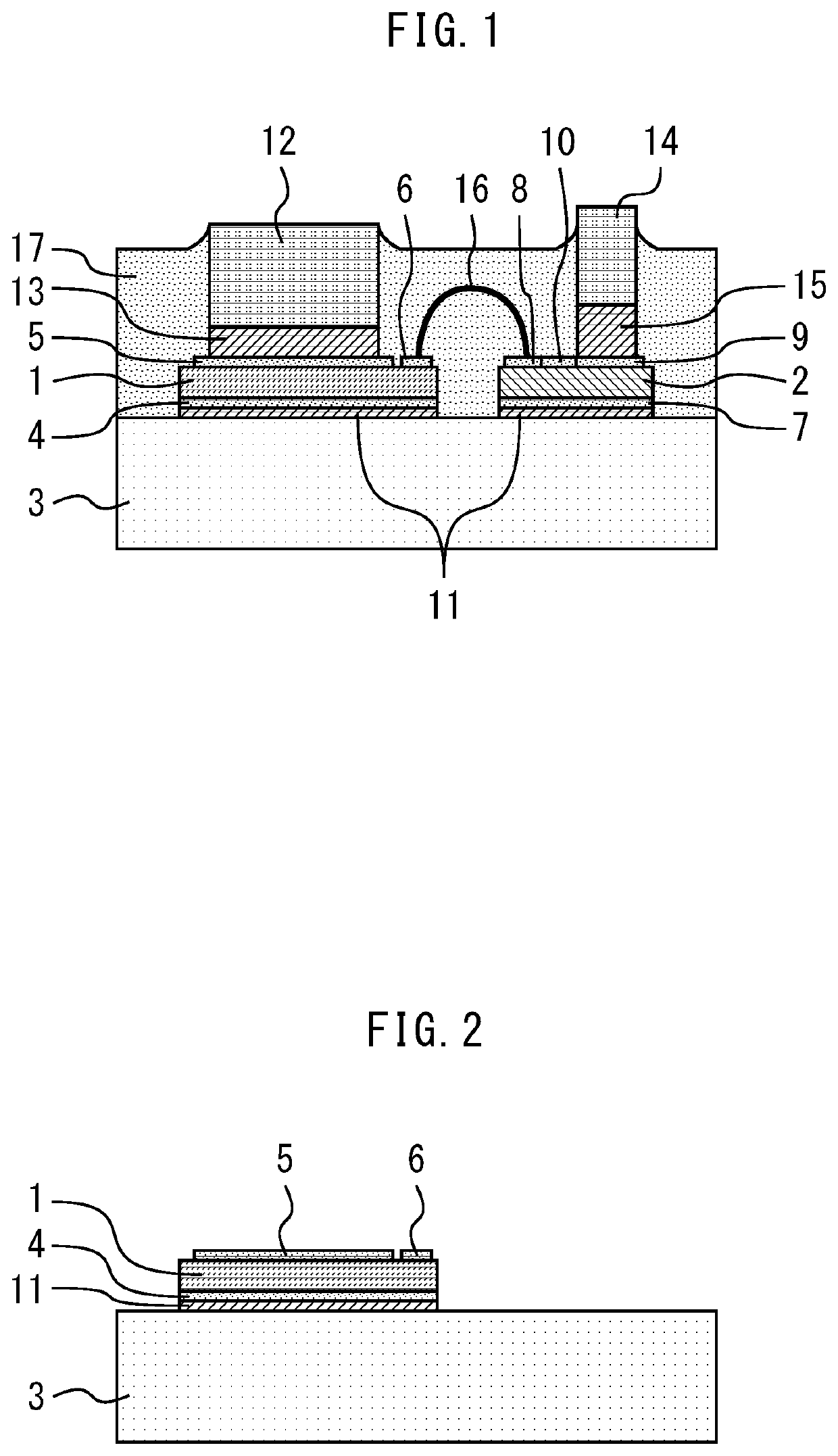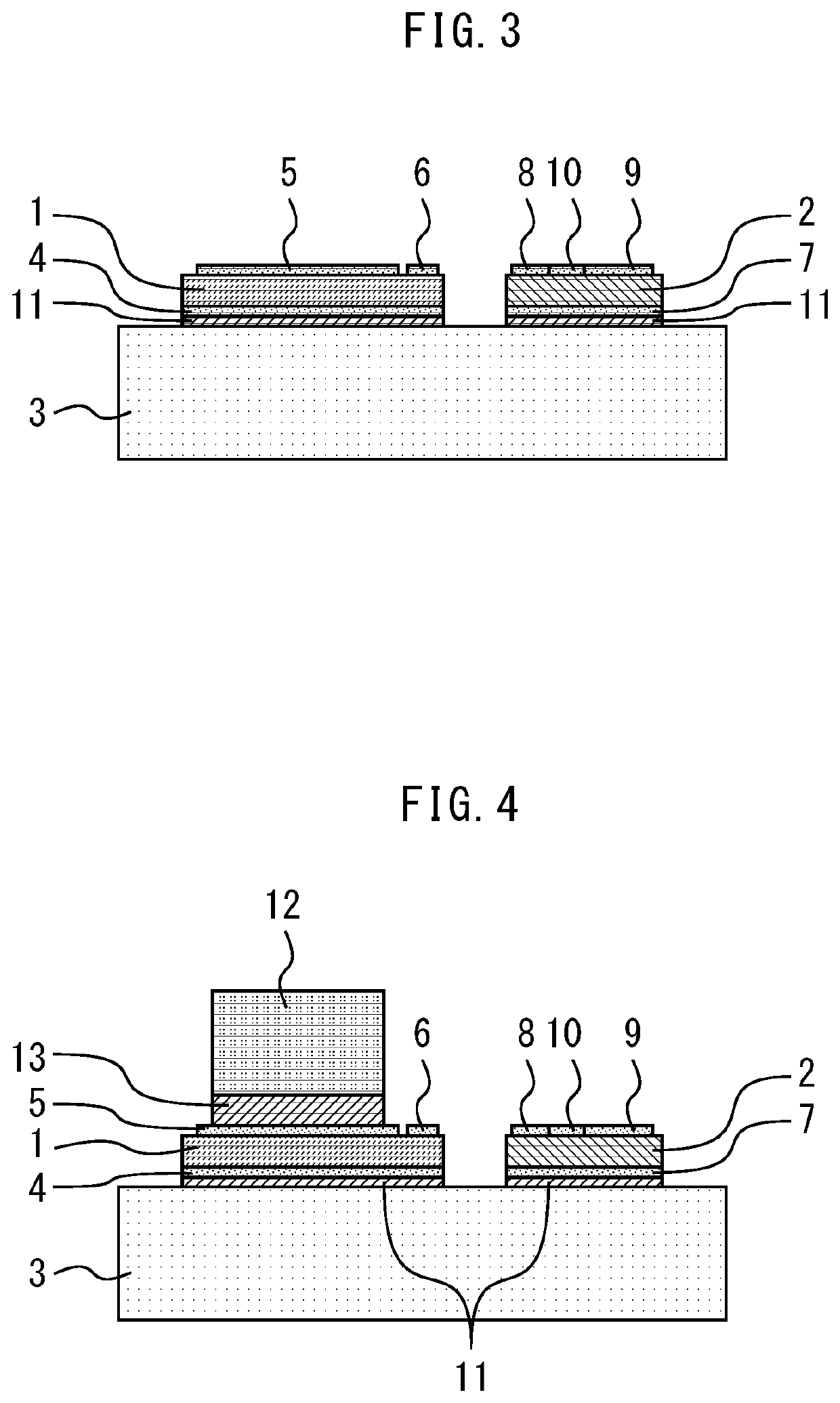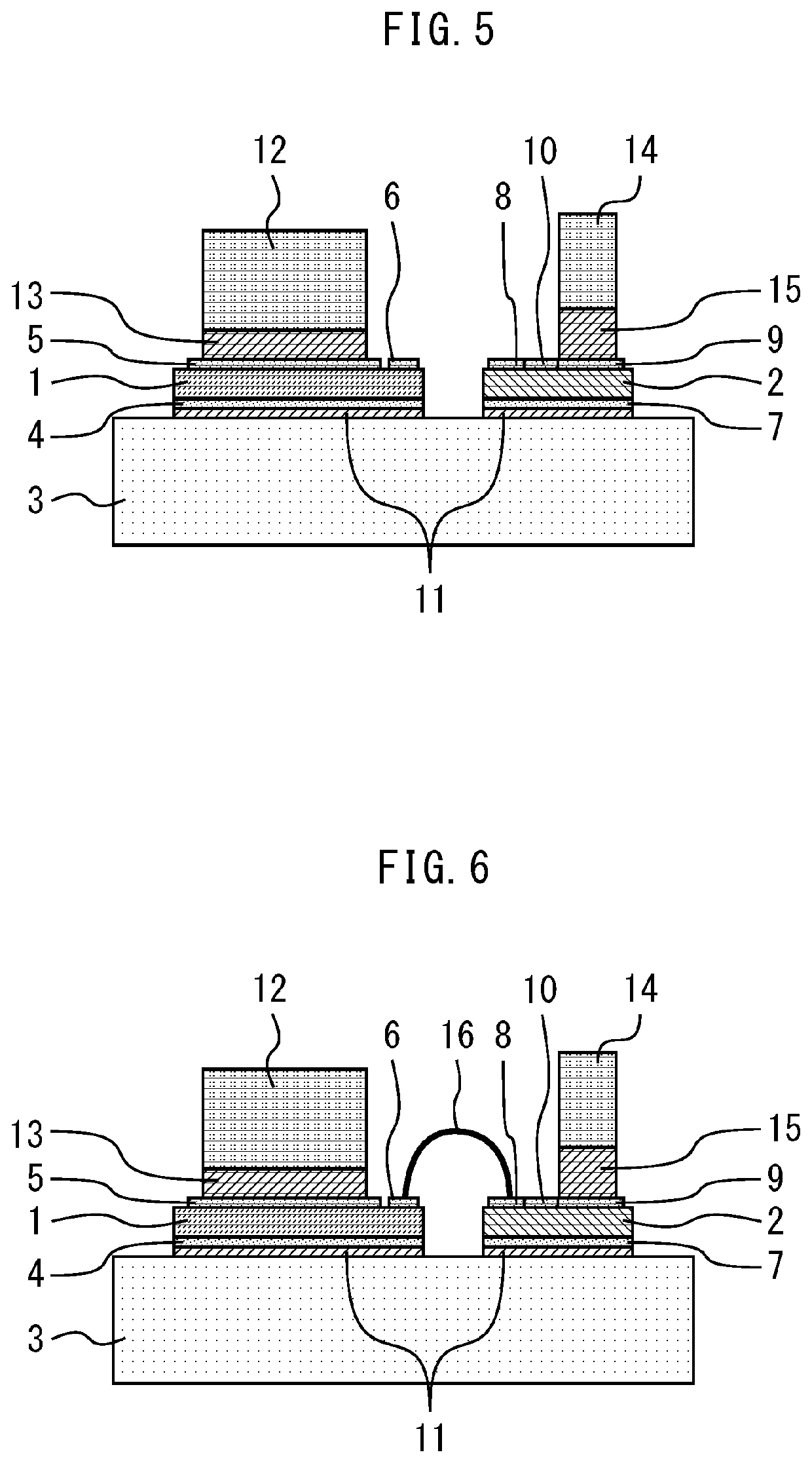Manufacturing method of semiconductor device
- Summary
- Abstract
- Description
- Claims
- Application Information
AI Technical Summary
Benefits of technology
Problems solved by technology
Method used
Image
Examples
first embodiment
[0025]FIG. 1 is a cross-sectional view illustrating a semiconductor device according to a first embodiment. A plurality of semiconductor chips 1 and one wiring chip 2 are bonded to a substrate 3. The semiconductor chip 1 includes a backside electrode 4 on a back side, and a main electrode 5 and a control electrode 6 on a front side. The semiconductor chip 1 is, for example, a MOSFET. The control electrode 6 is, for example, a gate electrode or a Kelvin source electrode. In a case where the semiconductor chip 1 incorporates a temperature sensing device or a current sensing device, the semiconductor chip 1 further includes control electrodes which respectively correspond to the temperature sensing device and the current sensing device.
[0026]The backside electrode 4 is, for example, a metal film in which a silicide layer, a titanium layer, a nickel layer, a titanium layer and a gold or silver layer are stacked in this order from the semiconductor chip 1 side using a sputtering method. ...
second embodiment
[0045]FIG. 13 is a cross-sectional view illustrating a semiconductor device according to a second embodiment. In the present embodiment, the wiring chip 2 and the connection member 16 are not provided, and the control electrode member 14 is bonded to the control electrode 6 of the semiconductor chip 1 via the second bonding material 15. Other configurations are similar to those in the first embodiment.
[0046]Subsequently, a manufacturing method of the semiconductor device according to the present embodiment will be described. FIGS. 14 to 16 are cross-sectional views illustrating the manufacturing method of the semiconductor device according to the second embodiment. First, as illustrated in FIG. 14, the semiconductor chip 1 is bonded to the substrate 3. Then, as illustrated in FIG. 15, the main electrode member 12 is bonded to the main electrode 5 via the first bonding material 13. The control electrode member 14 is bonded to the control electrode 6 via the second bonding material 15...
PUM
 Login to View More
Login to View More Abstract
Description
Claims
Application Information
 Login to View More
Login to View More - R&D
- Intellectual Property
- Life Sciences
- Materials
- Tech Scout
- Unparalleled Data Quality
- Higher Quality Content
- 60% Fewer Hallucinations
Browse by: Latest US Patents, China's latest patents, Technical Efficacy Thesaurus, Application Domain, Technology Topic, Popular Technical Reports.
© 2025 PatSnap. All rights reserved.Legal|Privacy policy|Modern Slavery Act Transparency Statement|Sitemap|About US| Contact US: help@patsnap.com



